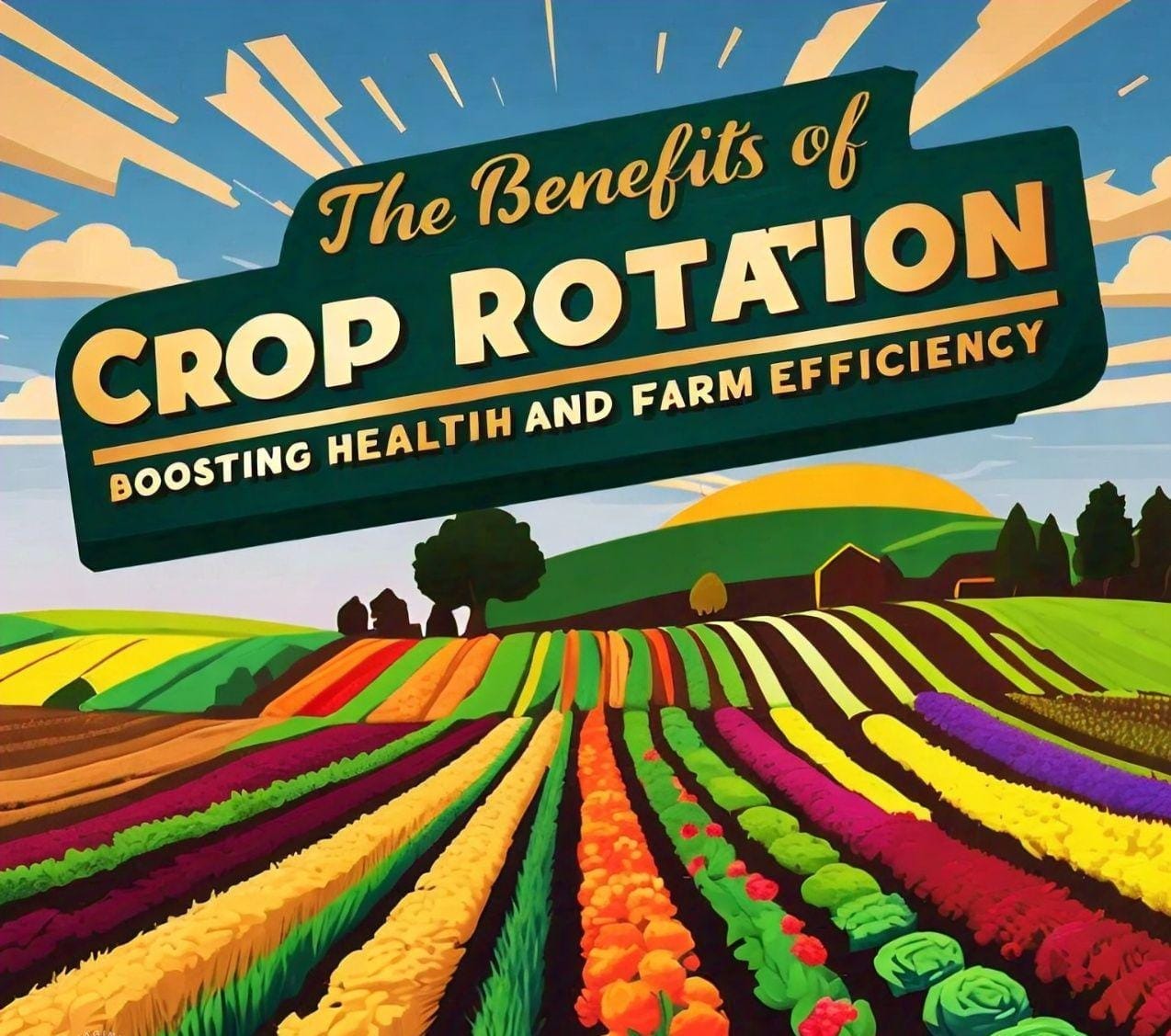"The Benefits of Crop Rotation: Boosting Soil Health and Farm Efficiency"
"The Benefits of Crop Rotation: Boosting Soil Health and Farm Efficiency"
Crop rotation is a fundamental agricultural practice that has been used for centuries to maintain soil fertility and reduce pest infestations. With modern farming techniques and increasing demand for sustainable food production, crop rotation has become more relevant than ever. Let’s dive into how crop rotation benefits farmers and how it can be integrated into modern farming systems for maximum efficiency.
1. Improved Soil Fertility
Continuous farming of the same crop depletes soil nutrients, leading to lower yields and an increased need for synthetic fertilizers. Crop rotation helps improve soil fertility by alternating crops with different nutrient needs. For example:
- Legumes (like beans, peas, and lentils) fix nitrogen in the soil, which is crucial for crops like corn or wheat in the next season.- Root vegetables break up compact soil, improving its structure and aeration.
By rotating crops, farmers can naturally replenish the soil with essential nutrients, reducing the dependency on chemical fertilizers.
2. Pest and Disease Control
Monoculture, or planting the same crop repeatedly, creates an ideal environment for pests and diseases to thrive. Crop rotation interrupts the lifecycle of pests by changing their habitat and food sources each season. Here’s how it works:
- Pests that rely on a specific crop are deprived of their food source when a different crop is planted.
- Certain diseases that affect one type of plant won’t have the chance to infect the next season’s crop.
By diversifying crops, farmers can significantly reduce the need for pesticides and fungicides, saving costs and promoting healthier ecosystems.
3. Weed Suppression
Different crops compete with weeds in varying ways. Rotating crops that grow in different seasons or have different canopy structures can naturally suppress weed growth. For example:
- Planting dense cover crops like rye or clover can outcompete weeds, leaving fewer opportunities for them to grow.
- Alternating between deep-rooted crops and shallow-rooted crops can disrupt weed establishment.
Crop rotation offers a natural method of weed control, reducing the need for herbicides and promoting a more biodiverse farm environment.
4. Reduced Soil Erosion
Soil erosion is a significant challenge in many farming regions, particularly where heavy rains wash away topsoil. Crop rotation helps reduce erosion by:
- Planting deep-rooted crops that stabilize the soil
- Growing cover crops in off-seasons to protect the soil from wind and water erosion
By maintaining soil integrity, crop rotation not only preserves the land but also ensures that future crops have fertile, stable ground to grow in.
5. Diversified Farm Income
Crop rotation often involves growing a variety of crops, which can help farmers diversify their income streams. Instead of relying on a single crop, which may be susceptible to market fluctuations or environmental challenges, farmers can:
- Sell different crops at different times of the year
- Grow crops for different markets, such as food, biofuel, or animal feed
A more diverse crop selection also provides flexibility to adapt to changing market demands or climate conditions.
6. Enhanced Water Use Efficiency
Different crops have different water needs, and rotating them can help optimize water use. For example:
- Deep-rooted crops can access water from lower in the soil, reducing the need for irrigation.
- Cover crops help retain soil moisture during dry periods.
By planning crop rotations carefully, farmers can reduce water waste, lower irrigation costs, and conserve valuable water resources, especially in drought-prone areas.
7. Better Soil Structure
Long-term monoculture can lead to soil compaction and degradation, making it harder for crops to thrive. Rotating crops with different root structures can improve soil texture and aeration. For example:
- Deep-rooted crops like sunflowers or carrots break up compacted soil.
- Leguminous crops contribute to soil organic matter, enhancing its structure.
Healthy soil structure is essential for crop growth, and crop rotation plays a key role in maintaining it.
How to Implement Crop Rotation on Your Farm
To successfully implement crop rotation, it’s important to plan based on your farm’s specific needs and conditions. Here are some general steps to follow:
1. Identify Your Soil's Needs –
Analyze your soil to determine what nutrients it lacks or has in abundance.2. Choose Complementary Crops –
Select crops that complement each other in terms of nutrient needs and pest control. For instance, rotate legumes with grains, or leafy vegetables with root crops.3. Design a Rotation Schedule –
Plan out a multi-year crop rotation cycle. A common practice is a three-year rotation: one year of nitrogen-fixing crops (like legumes), one year of leafy crops (like spinach or lettuce), and one year of root vegetables (like carrots).4. Use Cover Crops –
In off-seasons, plant cover crops to maintain soil health and prevent erosion.5. Monitor and Adjust –
Regularly assess soil health and yields. Adjust your crop rotation schedule if you notice any deficiencies or imbalances in the soil.Conclusion:
A Long-Term Investment in Farm Health
Crop rotation is not only a sustainable practice but also a smart economic strategy for farmers. It leads to better soil health, reduces the need for chemical inputs, and increases farm resilience. By integrating crop rotation into your farming operations, you’re investing in the long-term productivity of your land.
Whether you’re running a small farm or a large-scale operation, crop rotation can help you produce healthier crops, reduce input costs, and contribute to a more sustainable future for agriculture.
--- if you have any questions please use the comment section thanks 🤗🤗🥰🥰🥰


Comments
Post a Comment